Don’t Make Yourself at Home in Night City
How Cyberpunk 2077’s hostile architecture mirrors reality
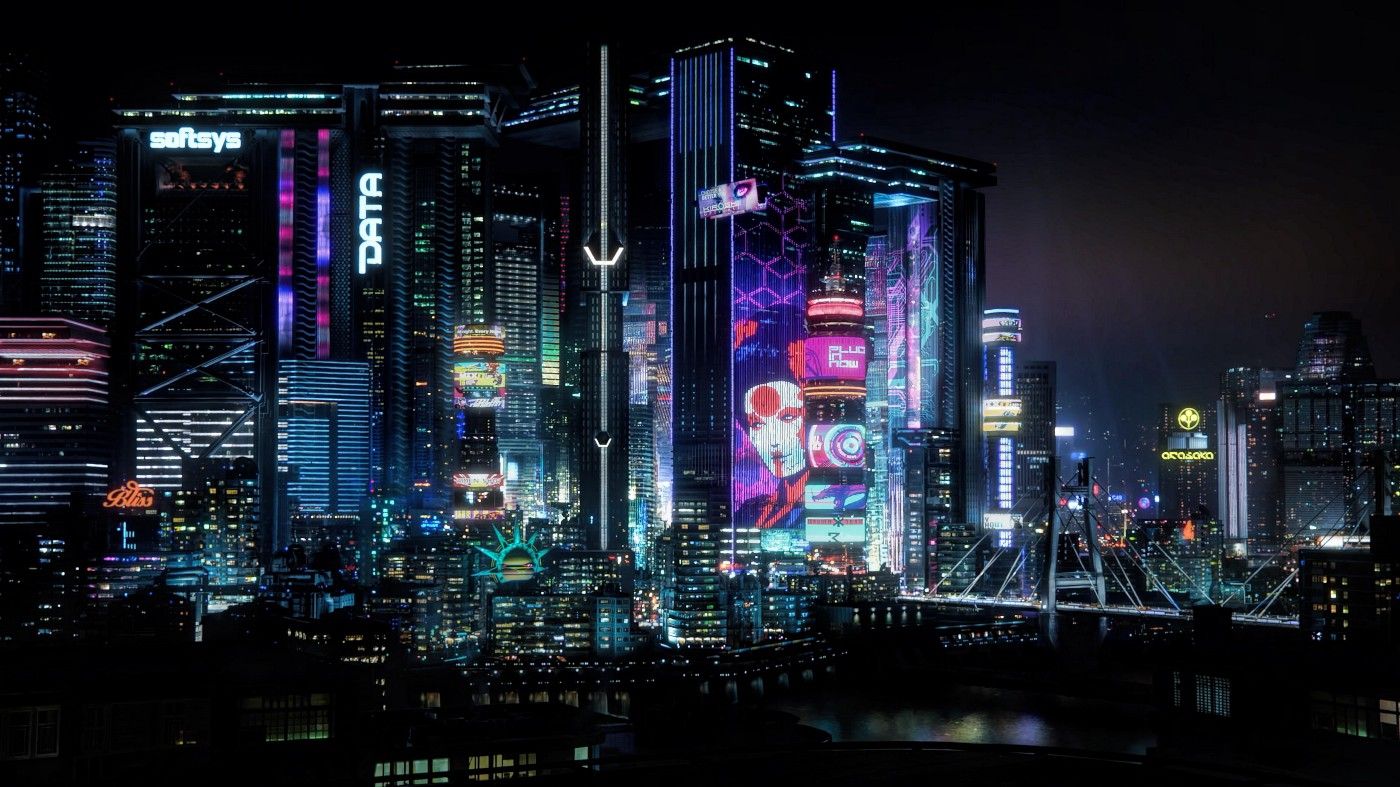
Night City burns with brightly colored ads, blaring music, chrome finishes, and a constant buzzing of notifications. Check your map, every inch is lit up with icons that demand your attention. Check your phone, there is always an unread message and an offer on a vehicle. It’s easy to lose yourself in the stimulus surge, Night City proving there never is a dull moment.
Richard Night originally envisioned this city to be one “free from poverty, crime, and stifling regulations imposed by centralized governments,” but that city never came to be (CD Project Red, 2020). Despite the flashy neon lights, it’s a city in the deep stages of decay.
It’s common to return to your complex and find a live crime scene. Or to find a good portion of Night City’s population curled up in corners or sleeping on cardboard boxes. Trash is everywhere.Yet turn the corner and there is a posh bar glittering with well-dressed patrons, purposefully ignoring Night City’s wails with a glass of champagne.
As I crane my head, taking in the psychedelic display playing across Night City’s skyline, I turn the camera down and I notice the benches. They’re easy to miss, yet in plain sight. Benches covered with metal spikes or nubs.
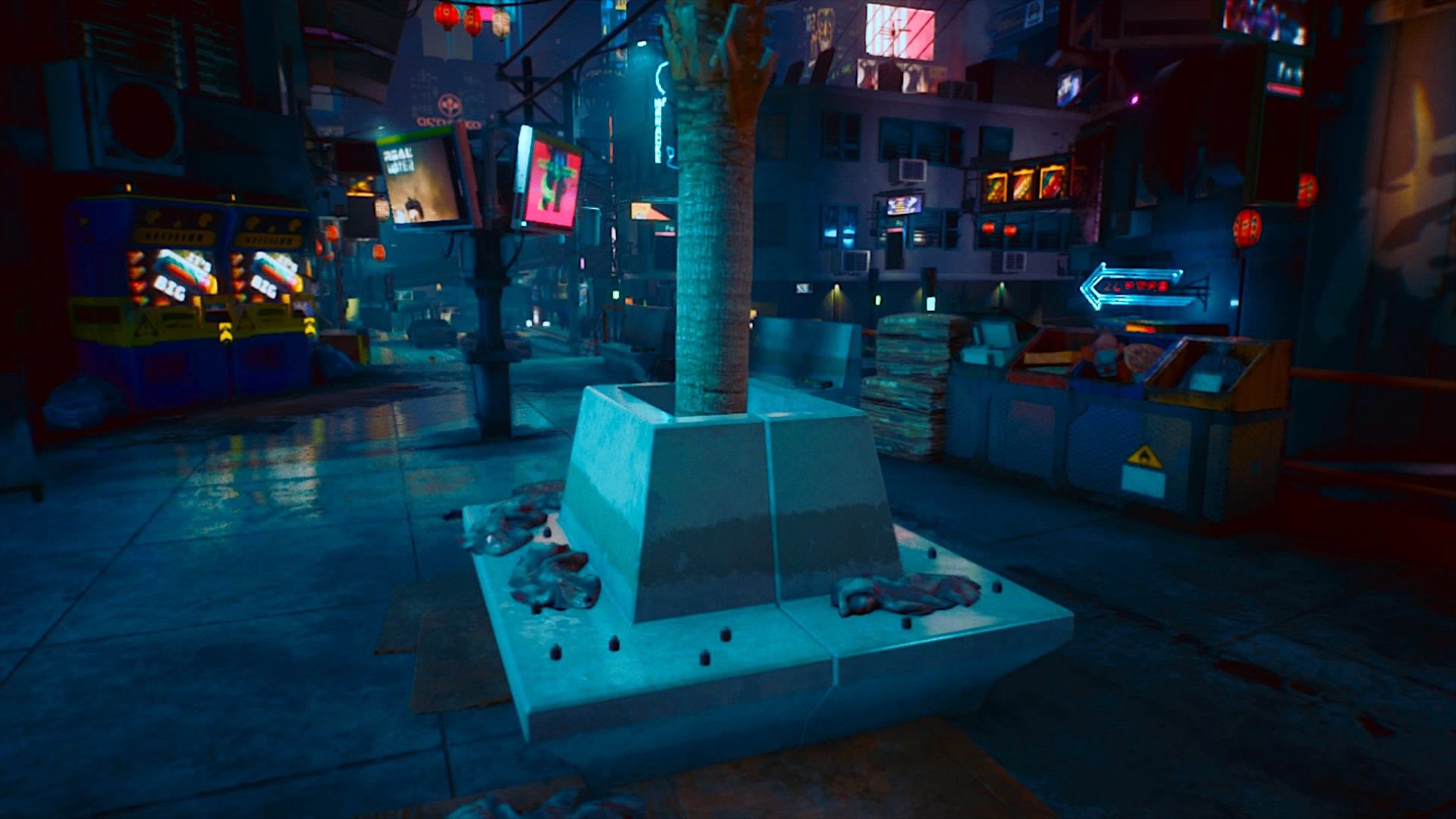
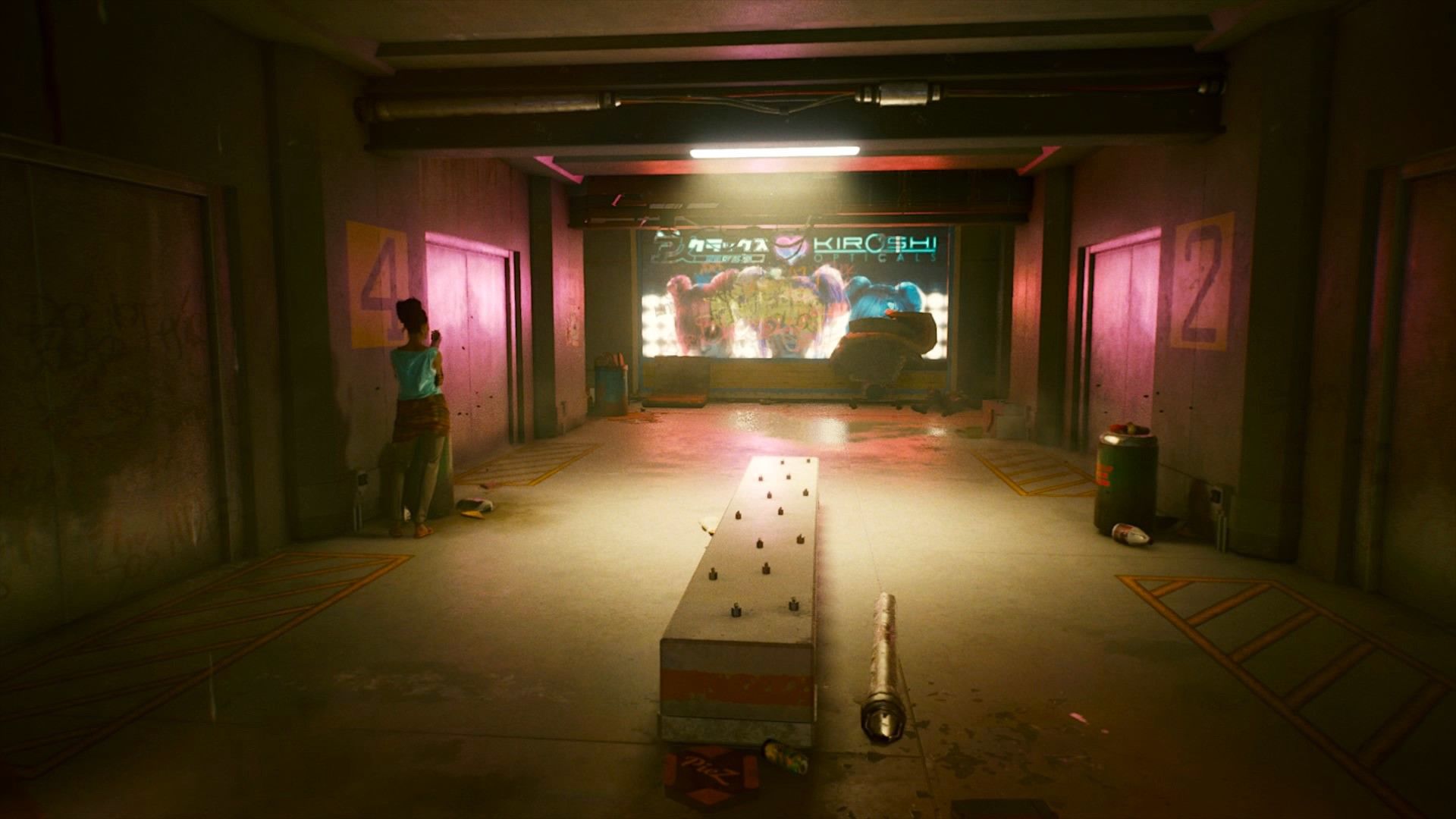
Source: Author.
Sometimes they’re in high-traffic areas, other times they’re tucked away. The message is simple: you can’t sit here.
Who do you think this message is for?
The homeless. An affected population that has only grown due to economic and social upheaval in the fictional Earth that Night City exists in.
How do I know this? Because these benches and other restrictive designs in public space exist in my own city.
Art Imitating Life
Walk through cities in the Bay Area and you’ll find benches with metal nubs, spiked window sills on ground level, and slanted bench seats. Even the transit system (BART) is notorious for its restrictive architecture within its stations (Blanco, 2019).
What we see in Night City is an imitation of what already exists today: hostile architecture.
There is a high chance it exists in your own city, but you’ve never taken notice.
Ever waited at a bus stop and the seats at the stop are metal slabs slanted downward? Or gaps in awnings, letting rainwater and snow fall through? Or concrete spikes or boulders underneath bridges? How about benches with multiple arm rests that prevent you from lying down?
Hostile architecture can even take on subtle forms. Instead of metal nubs, it’s “decorative rocks” glued down. It’s the constant blaring of loud music in public spaces at night. It’s the absence of drinking fountains, benches, and public restrooms in public spaces.
Creators of hostile architecture (called “defensive architecture” on paper) professes to promote public order and create an environment of safety. What these designs truly do is limit areas in large public spaces and sends a message about who is and isn’t welcomed (Hu, 2019). In no way does it address the homelessness crisis.
“A lot of the design, in general, these days is creating an environment where people who are marginalized are not welcome.” — Kelly Cutler
We see this message play out in Night City through its design and in the plot itself: those in power dictate the spaces you can occupy.
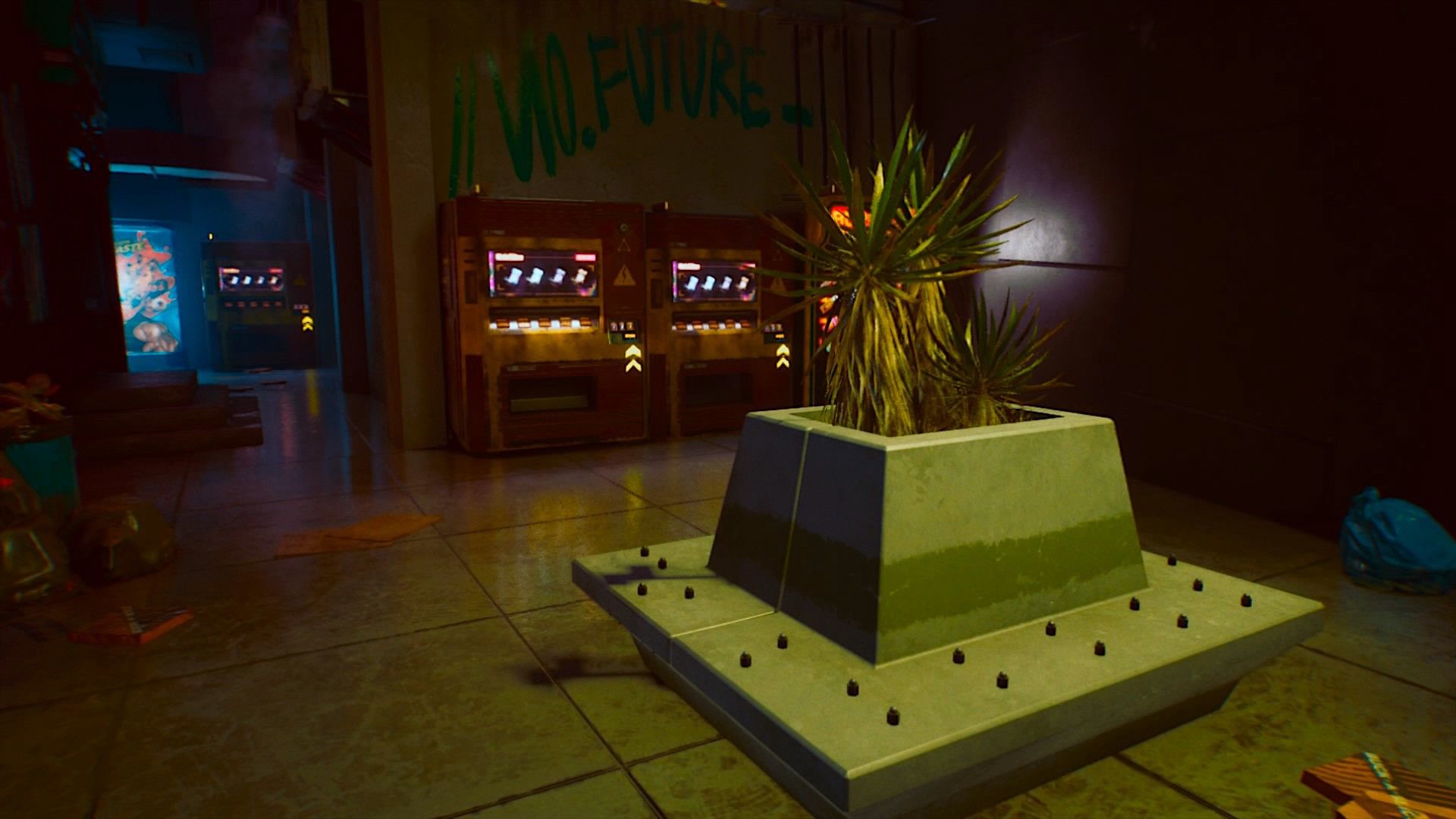
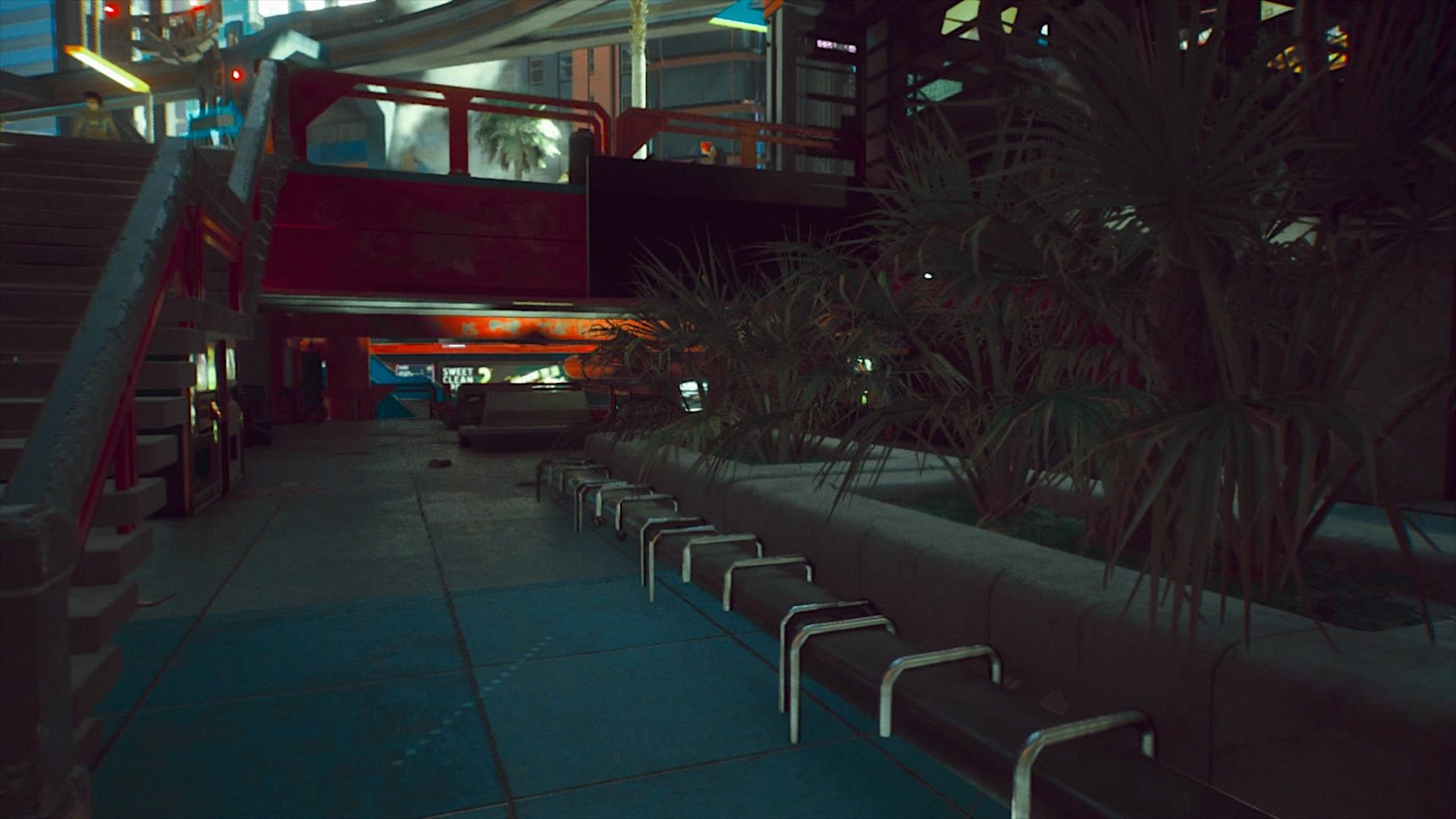
Restrictive benches (arm rests sectioning the space off) is an example of hostile architecture. Source: Author.
Why This Matters
The presence of hostile architecture in Night City is no coincidence. Night City brazenly shows off the economic disparities between its citizens and those with wealth. These design features only further said disparity by making public spaces less accessible to those with nowhere to go (Hu, 2019).
It makes sense V’s disapproval when Jackie, our partner-in-crime, romanticizes Night City. Or the critique toward Yorinobu Arasaka leaving the lap of luxury to create his own gang and returning when it didn’t pan out.
Even though we’ll admit we’re intrigued by Jackie’s yearning to move up and become a legend, there is a grim understanding that the city is structured to work against you.
While these purposeful design choices support this theme, I hope it can bring awareness to a very real fixture in life that negatively impacts many.
So as you walk through Night City, or through your own city, keep your eyes peeled. Hostile architecture comes in all shapes and sizes, but the message is always the same: don’t make yourself at home.
